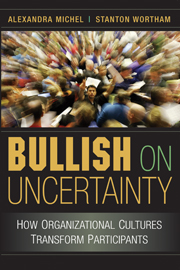Book contents
2 - Practices That Reduced Cognitive Uncertainty at Individual Bank
Published online by Cambridge University Press: 10 January 2011
Summary
Individual Bank designed its practices to reduce the uncertainty that confronted bankers. When asked an open-ended question about factors that were critical for a bank's performance, thirty-four out of thirty-eight senior Individual Bankers (vice presidents, directors, and managing directors) mentioned the reduction of banker uncertainty. They said that banks fail when bankers “are overwhelmed with the information they get or the tasks they have to do,” “aren't given clear goals or directives,” and “do not get the training they need to know how to do their job.” Individual Bank helped bankers manage uncertainty by giving them relatively abstract concepts – such as expert knowledge, norms, and goals – to narrow the bankers' range of attention and guide decisions. The central practices that Individual Bankers considered important for managing uncertainty were strategy formulation, role definition, training, staffing, and feedback. Table 2.1 summarizes how the two banks organized these practices differently.
STRATEGY AND STRUCTURES
The Individual Bankers believed that strategy was crucial to a bank's success and that devising strategies was the task of top management. When asked what makes a bank successful, one Individual Bank director emphasized the power of a strategy to focus and coordinate bankers who struggle with a complex and rapidly changing environment:
If you want to understand why bankers in some banks are able to do their jobs, while bankers in other banks are running around aimlessly, you have to look at top management first and at the kind of strategy that they are putting in place. That's what helps people make sense in a chaotic environment.[…]
- Type
- Chapter
- Information
- Bullish on UncertaintyHow Organizational Cultures Transform Participants, pp. 37 - 60Publisher: Cambridge University PressPrint publication year: 2008



